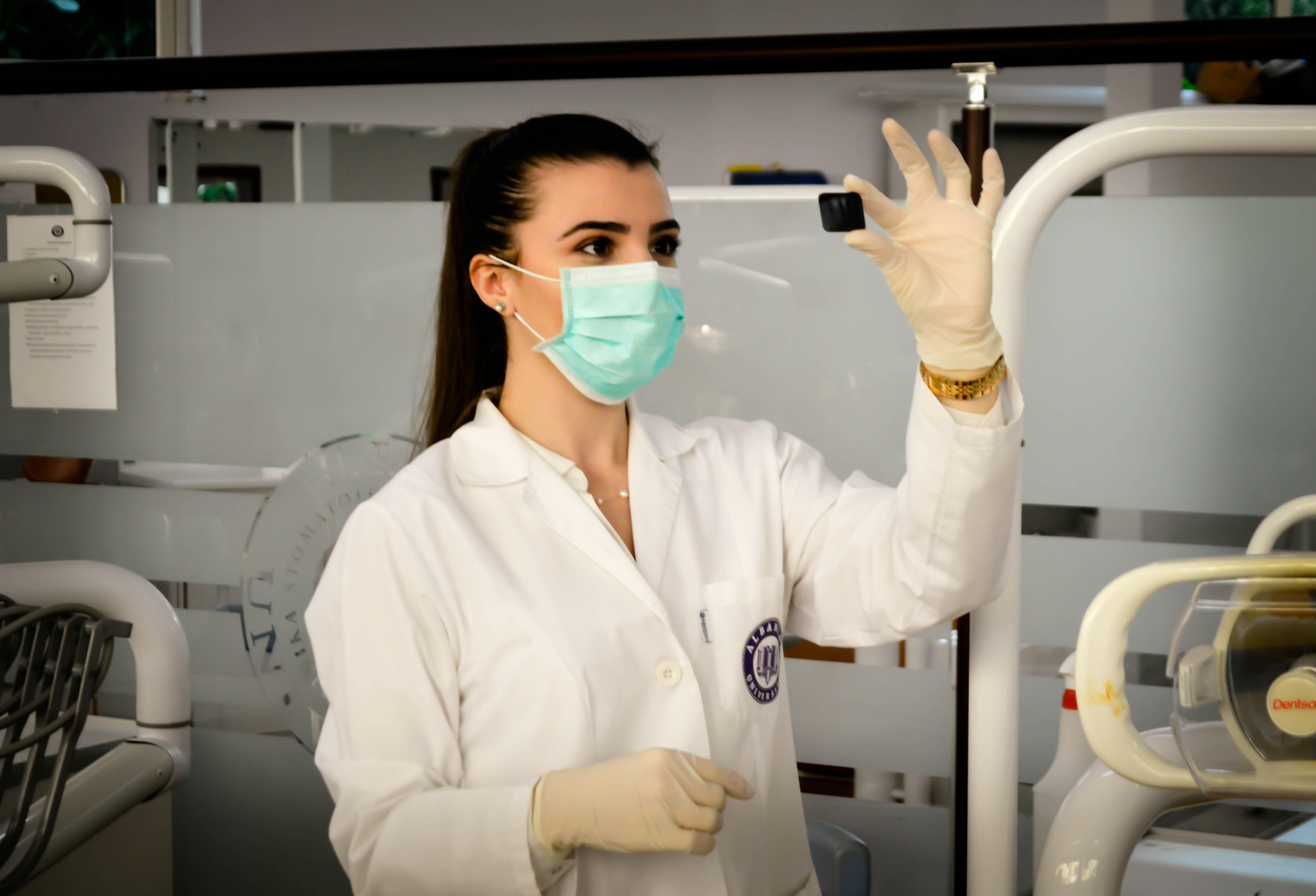Medical Surveillance and Occupational Health Management: Protecting Worker Health in the Modern Workplace

Strong 8k brings an ultra-HD IPTV experience to your living room and your pocket.
The intersection of medicine and workplace safety has evolved into a sophisticated system of protection and prevention. Medical surveillance and occupational health management represent the frontline defence against workplace hazards that can compromise worker health and organisational productivity. As companies increasingly recognise the value of comprehensive corporate medical packages, these programs have transformed from reactive measures into proactive systems designed to identify risks before they manifest as illness or injury.
The Evolution of Workplace Health Monitoring
The history of occupational health dates back to the industrial revolution, when physicians first began to document patterns of illness among factory workers. However, modern medical surveillance bears little resemblance to these early observations. Today's systems employ sophisticated technologies, extensive data collection, and predictive analytics to create environments where worker health is continuously monitored and protected.
What began as simple physical examinations has evolved into multifaceted programs that may include biological monitoring, health risk assessments, fitness evaluations, and specialised testing for workplace-specific hazards. This evolution reflects a growing understanding of the complex relationship between work and health, as well as increasing intolerance for preventable workplace illness and injury.
Key Components of Effective Medical Surveillance
Medical surveillance programs vary widely depending on industry, regulatory requirements, and specific workplace hazards. However, most comprehensive programs share several essential components:
1. Baseline Health Assessments
Establishing a worker's health status at the beginning of employment provides a critical reference point for future comparisons. These assessments typically include physical examinations, medical history reviews, and job-specific screening tests. The data collected serves as a foundation for personalised health monitoring throughout the worker's employment.
2. Hazard-Specific Monitoring
Different work environments pose unique health risks. Medical surveillance programs must be tailored to address these specific hazards. In manufacturing settings, hearing conservation programs track exposure to noise and early signs of hearing loss. Chemical plants require monitoring for exposure to toxic substances through blood tests and other biomarkers. Construction sites necessitate regular assessments for musculoskeletal health and function.
3. Periodic Health Evaluations
Regular health assessments allow for early detection of work-related health effects. The frequency of these evaluations depends on the nature of the hazards, regulatory requirements, and the health status of individual workers. These evaluations may include specialised tests such as pulmonary function testing, vision screening, or an intolerance test for workers who handle allergens or sensitising agents.
4. Data Management and Analysis
Modern medical surveillance generates vast amounts of health data. Effective programs employ robust systems for data collection, storage, and analysis that maintain individual privacy while enabling population-level insights. Advanced analytics can identify trends and emerging health concerns before they become widespread problems.
The Business Case for Comprehensive Occupational Health Management
While regulatory compliance often drives the implementation of medical surveillance programs, forward-thinking organisations recognise the broader benefits of comprehensive occupational health management:
1. Economic Benefits
The financial case for occupational health management is compelling. Direct costs associated with workplace injuries and illnesses—including medical expenses, workers' compensation, and disability payments—can be substantial. However, indirect costs, such as lost productivity, reduced employee morale, and increased turnover, often exceed these direct expenses. Studies consistently show that investments in preventive occupational health programs yield significant returns, with some analyses suggesting a return of $2 to $6 for every dollar invested.
2. Enhanced Productivity and Workforce Stability
Healthy workers are more productive workers. Comprehensive occupational health programs contribute to reduced absenteeism, improved job performance, and enhanced workforce stability. By addressing health concerns before they lead to disability or departure, these programs help organisations maintain institutional knowledge and reduce the costs associated with worker replacement and training.
3. Corporate Reputation and Competitive Advantage
Organisations known for their commitment to worker health often enjoy enhanced reputations among customers, investors, and potential employees. This reputational benefit can translate into competitive advantages in tight labour markets and increased customer loyalty, particularly in industries where social responsibility is valued.
Emerging Trends in Medical Surveillance
The field of occupational health continues to evolve, driven by technological innovations, changing work patterns, and new understanding of health risks:
• Wearable Technology and Real-Time Monitoring: Advances in wearable devices have created new possibilities for continuous health monitoring. These technologies can track physiological parameters such as heart rate, body temperature, and movement patterns, providing early warning signs of health issues or hazardous conditions. For workers in high-risk environments, such as those exposed to extreme temperatures or toxic substances, real-time monitoring can enable immediate intervention when parameters exceed safe thresholds.
• Integration with Wellness Programs: Progressive organisations are increasingly integrating medical surveillance with broader wellness initiatives. This holistic approach recognises that worker health is influenced by factors both within and outside the workplace. Comprehensive corporate medical test protocols may be combined with lifestyle interventions, mental health support, and chronic disease management to address the full spectrum of factors affecting worker health and productivity.
Addressing Mental Health in Occupational Surveillance
Traditional medical surveillance has focused primarily on physical health effects. However, growing recognition of the impact of workplace factors on mental health has led to the incorporation of psychological monitoring into occupational health programs. This may include screening for stress, anxiety, depression, and other mental health concerns that can affect worker well-being and performance.
1. Genetic Testing and Ethical Considerations
Advances in genetic testing have raised new possibilities and ethical questions for occupational health surveillance. While genetic information could potentially identify individuals with increased susceptibility to specific workplace hazards, concerns about privacy, discrimination, and informed consent present significant challenges. Most jurisdictions have established legal protections against genetic discrimination, but the appropriate use of genetic information in occupational health remains a topic of ongoing debate.
2. Regulatory Framework and Compliance
Medical surveillance programs operate within a complex regulatory environment that varies by jurisdiction, industry, and specific hazards. In the United States, multiple federal agencies, including the Occupational Safety and Health Administration (OSHA), the Mine Safety and Health Administration (MSHA), and the Nuclear Regulatory Commission (NRC), mandate specific medical surveillance requirements for workers exposed to various hazards.
These regulations typically specify:
• Which workers must be included in surveillance programs.
• The frequency and content of medical examinations.
• Record-keeping requirements and data retention periods.
• Procedures for addressing abnormal findings.
While compliance with these regulations is mandatory, many organisations choose to exceed minimum requirements, recognising that more comprehensive programs yield greater benefits in terms of worker health and organisational performance.
Challenges in Implementing Effective Medical Surveillance
Despite the clear benefits, organisations face several challenges in implementing and maintaining effective medical surveillance programs:
• Access to Occupational Health Expertise: Many organisations, particularly smaller enterprises, lack ready access to healthcare professionals with specialised training in occupational medicine. This expertise gap can make it difficult to design and implement appropriate surveillance programs, interpret results, and develop effective interventions.
• Privacy Concerns and Data Security: Medical surveillance generates sensitive personal health information that must be carefully protected. Organisations must navigate complex privacy regulations while still enabling the data sharing necessary for effective health monitoring and intervention.
• Worker Engagement and Trust: The success of medical surveillance programs depends heavily on worker participation and trust. Employees may be reluctant to disclose health information or participate fully in monitoring programs if they fear discrimination, job loss, or other negative consequences.
• Cross-Border Considerations: For multinational organisations, differences in regulatory requirements, healthcare systems, and cultural attitudes toward health monitoring can complicate the implementation of consistent programs across operations in different countries.
• Best Practices for Program Implementation: Organisations seeking to establish or enhance medical surveillance programs should consider the following best practices:
• Risk-Based Program Design: Effective medical surveillance focuses resources where they are most needed. A thorough workplace hazard assessment should inform the design of surveillance protocols, ensuring that monitoring activities address the most significant risks to worker health.
• Clear Communication and Education: Workers should understand the purpose of medical surveillance, the nature of the data collected, and how that information will be used and protected. Transparent communication builds trust and encourages participation in monitoring activities.
• Integration with Broader Health and Safety Systems: Medical surveillance should not operate in isolation but should be integrated with other elements of the organisation's health and safety management system. This integration enables more effective hazard identification, control, and continuous improvement.
• Continuous Evaluation and Improvement: Medical surveillance programs should be regularly evaluated for effectiveness, relevance, and efficiency. This evaluation should consider both process measures (such as participation rates and timeliness of follow-up) and outcome measures (such as trends in workplace illness and injury).
The Future of Medical Surveillance
As workplaces continue to evolve, medical surveillance programs will need to adapt to address new challenges and leverage new opportunities:
• Monitoring Remote and Distributed Workforces: The growth of remote work and distributed workforces presents new challenges for traditional medical surveillance. Organisations will need to develop innovative approaches to monitor health risks and outcomes among workers who may rarely or never visit a central workplace.
• Addressing Emerging Health Risks: New technologies, materials, and work processes continue to introduce potential health hazards that may not be fully understood. Medical surveillance programs will need to evolve to identify and monitor these emerging risks.
• Leveraging Artificial Intelligence and Big Data: Advanced analytics and artificial intelligence offer new possibilities for identifying patterns and predicting health risks. These technologies could enable more proactive and personalised approaches to worker health protection.
• Greater Worker Empowerment: Future medical surveillance programs are likely to place greater emphasis on worker empowerment, providing individuals with more control over their health data and more active roles in health monitoring and management.
Final Thoughts
Medical surveillance and occupational health management represent critical investments in worker well-being and organisational success. By systematically monitoring workplace health risks and their effects, organisations can protect their most valuable assets—their people—while enhancing productivity, reducing costs, and fulfilling their ethical obligations.
As technology advances and our understanding of the complex relationship between work and health continues to deepen, the field of occupational health will continue to evolve. Organisations that embrace comprehensive, innovative approaches to medical surveillance will be best positioned to thrive in an increasingly complex and demanding business environment.
The future of work demands not just compliance with minimum standards but a genuine commitment to creating workplaces where health is actively protected and promoted. Through effective medical surveillance and comprehensive occupational health management, this vision can become reality.
Note: IndiBlogHub features both user-submitted and editorial content. We do not verify third-party contributions. Read our Disclaimer and Privacy Policyfor details.







